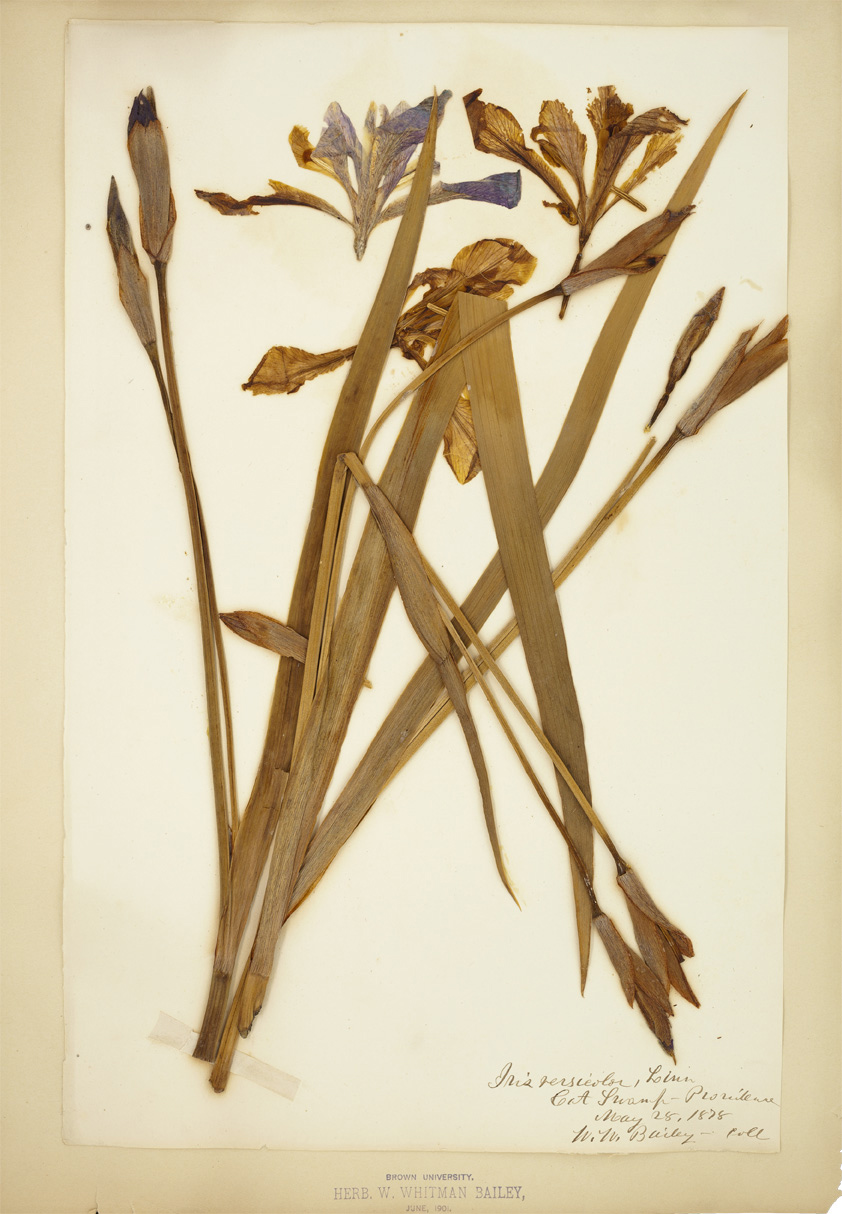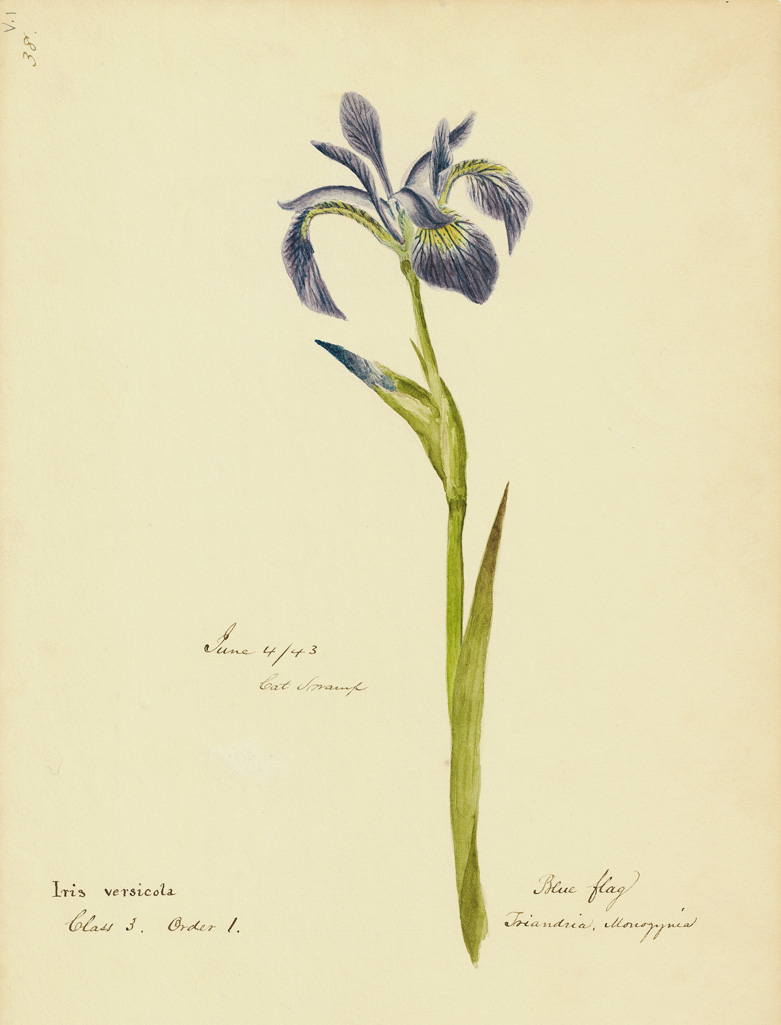The old French kings were men of taste when they chose the flag-lily for their royal emblem. It is truly a regal plant. ‘Born to the purple, born to joy and pleasance,’ it unfolds its velvety petals and stands king-like in the meadows. . . . Our American species of iris are not so beautiful as the various cultivated foreigners; they make a concession to our democratic institutions. Still, there is enough pomp of courts about them to make one know that they would shine therein. Points of official etiquette would come easily to them. They have the right divine.
— William Whitman Bailey, New England Wildflowers and Their Seasons (1897)
Dr. Asa Gray, North America’s preeminent nineteenth-century botanist, based at Harvard University, declared that Peckham’s images were the most perfect representations of New England plants that he had ever seen. Gray commented: “They are practically photographs, in many instances, of the entire plant, root, stem, leaf and flower.”
Iris versicolor L.
blue iris or blue flag, Iridaceae (iris family)
This species is common throughout New England and has also been documented across the upper Great Lakes region. Iris versicolor grows in marshes, wet meadows and in shallow water around lake and river margins. It was used by Native Americans to treat burns and other sores and for various maladies of the kidneys and liver.
The genus name, Iris, is the mythological name of the goddess of the rainbow (referring to the range of colors in the genus Iris) and messenger of the gods. The species name, versicolor, is Latin for “variously or changeably colored.”


